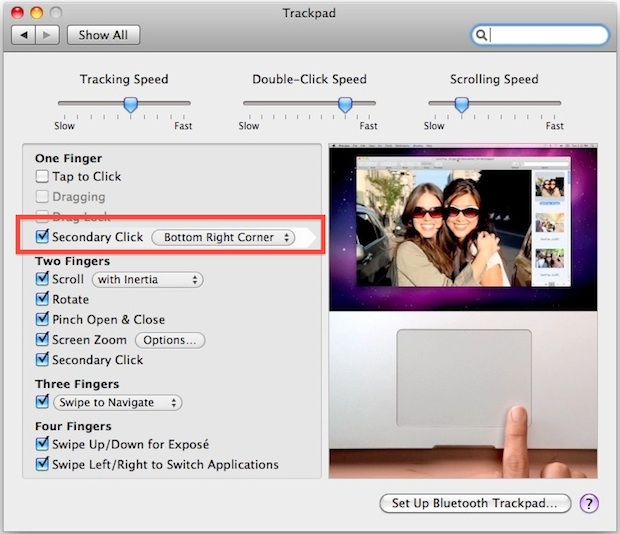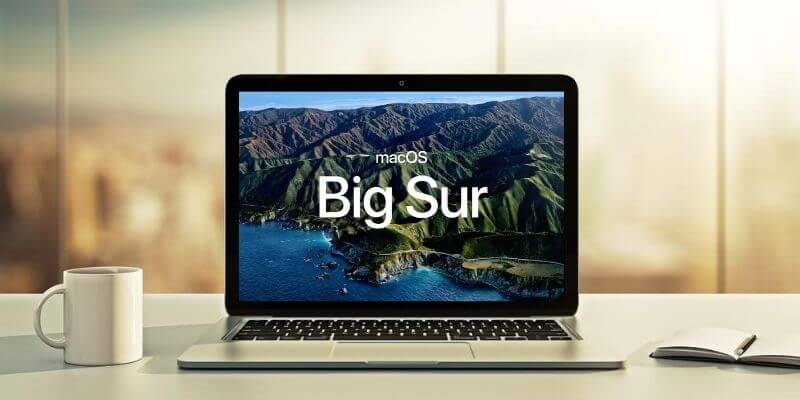- Demo Virus For Mac OS X Released: Friday November 03, 2006 @11:44AM: iPod Owners Not As Loyal To Brand As Mac Owners: Tuesday October 31, 2006 @05:44AM: New Mac-o-Lantern: Monday October 30, 2006 @08:19PM: How Encrypted Binaries Work In Mac OS X: Monday October 30, 2006 @02:35PM: Apple Unveils Extra Leopard-isms To Developers: Monday October 23.
- This option is, however, a little different to using Time Machine features in the regular OS as this will entirely erase the contents of the selected drive and replace them with the contents of the backup. The process won't discriminate and your Mac will act as if it had literally been taken back in.
May 23, 2016 Mac OS X defaults to a predefined set system font size for all onscreen text and user interface elements, and while many users will find the default text size to be sufficient, some users may wish the system font size was larger, and some may wish the Mac system text size was smaller. The Macintosh Performa is a family of personal computers designed, manufactured and sold by Apple Computer, Inc. From 1992 to 1997. The Performa brand re-used models from Apple's Quadra, Centris, LC, and Power Macintosh families with model numbers that denoted included software packages or hard drive sizes.
The safest place to get apps for your Mac is the App Store. Apple reviews each app in the App Store before it’s accepted and signs it to ensure that it hasn’t been tampered with or altered. If there’s ever a problem with an app, Apple can quickly remove it from the store.
If you download and install apps from the internet or directly from a developer, macOS continues to protect your Mac. When you install Mac apps, plug-ins, and installer packages from outside the App Store, macOS checks the Developer ID signature to verify that the software is from an identified developer and that it has not been altered. By default, macOS Catalina and later also requires software to be notarized, so you can be confident that the software you run on your Mac doesn't contain known malware. Before opening downloaded software for the first time, macOS requests your approval to make sure you aren’t misled into running software you didn’t expect.
Running software that hasn’t been signed and notarized may expose your computer and personal information to malware that can harm your Mac or compromise your privacy.
The warning messages displayed below are examples, and it's possible that you could see a similar message that isn't displayed here. Please use caution if you choose to install any software for which your Mac displays an alert.
View the app security settings on your Mac
By default, the security and privacy preferences of your Mac are set to allow apps from the App Store and identified developers. For additional security, you can chose to allow only apps from the App Store.
In System Preferences, click Security & Privacy, then click General. Click the lock and enter your password to make changes. Select App Store under the header “Allow apps downloaded from.”

Open a developer-signed or notarized app
If your Mac is set to allow apps from the App Store and identified developers, the first time that you launch a new app, your Mac asks if you’re sure you want to open it.
An app that has been notarized by Apple indicates that Apple checked it for malicious software and none was detected.
If you see a warning message and can’t install an app
If you have set your Mac to allow apps only from the App Store and you try to install an app from elsewhere, your Mac will say that the app can't be opened because it was not downloaded from the App Store.*
If your Mac is set to allow apps from the App Store and identified developers, and you try to install an app that isn’t signed by an identified developer and—in macOS Catalina and later—notarized by Apple, you also see a warning that the app cannot be opened.
If you see this warning, it means that the app was not notarized, and Apple could not scan the app for known malicious software.
You may want to look for an updated version of the app in the App Store or look for an alternative app.
If macOS detects a malicious app
If macOS detects that software has malicious content or its authorization has been revoked for any reason, your Mac will notify you that the app will damage your computer. You should move this app to the Trash and check 'Report malware to Apple to protect other users.'
If you want to open an app that hasn’t been notarized or is from an unidentified developer
Running software that hasn’t been signed and notarized may expose your computer and personal information to malware that can harm your Mac or compromise your privacy. If you’re certain that an app you want to install is from a trustworthy source and hasn’t been tampered with, you can temporarily override your Mac security settings to open it.
If you still want to open an app for which the developer cannot be verified, open System Preferences.*
Go to Security & Privacy. Click the Open Anyway button in the General pane to confirm your intent to open or install the app.
The warning prompt reappears, and if you're absolutely sure you want to open the app anyway, you can click Open.
The app is now saved as an exception to your security settings, and you can open it in the future by double-clicking it, just as you can any authorized app.

Literally Mac Os 7
Privacy protections
macOS has been designed to keep users and their data safe while respecting their privacy.
Gatekeeper performs online checks to verify if an app contains known malware and whether the developer’s signing certificate is revoked. We have never combined data from these checks with information about Apple users or their devices. We do not use data from these checks to learn what individual users are launching or running on their devices.
Notarization checks if the app contains known malware using an encrypted connection that is resilient to server failures.
These security checks have never included the user’s Apple ID or the identity of their device. To further protect privacy, we have stopped logging IP addresses associated with Developer ID certificate checks, and we will ensure that any collected IP addresses are removed from logs.
In addition, over the the next year we will introduce several changes to our security checks:
- A new encrypted protocol for Developer ID certificate revocation checks
- Strong protections against server failure
- A new preference for users to opt out of these security protections
* If you're prompted to open the app in Finder and you're sure you want to open it despite the warning, you can control-click the app, choose Open from the menu, and then click Open in the dialog that appears. Enter your admin name and password to open the app.
On this blog, I write about the various computers I use and about the operating systems I use on them. Apart from Windows 7, which is relatively modern, these include Mac OS 10.6 Snow Leopard, which at this point is quite old, and Mac OS 9, which is practically ancient. I’d like to talk a bit about why I use such old systems.
Joy
I’ve mentioned before that, to me, computers are more than just a means to an end. I enjoy them or dislike them to the extent that they are a reflection of myself, to the extent that I can identify myself with them. They bring me immense joy – as well as much irritation, unfortunately…
Because I see computing as an interest, a hobby and a passion, I don’t like to use computers and operating systems that I don’t enjoy using, in the same way that somebody who enjoys literature isn’t interested in reading literature that they think is poorly written. That’s why I refuse to use Windows 10. The poor user interface just hurts my soul.
It happens to be that some of the best, most well-designed, most enjoyable user interfaces are buried in history. There is no modern equivalent to the Macintosh. If I want an enjoyable computing experience, then I am forced to look in the past.
Literally Mac Os 7
Apps
Even from a totally pragmatic standpoint, there are good reasons not to reject old computers. To me, the most glaring example is HyperCard, a revolutionary application for the Macintosh which literally does not exist on modern operating systems. If you’ve never used it, it’s hard to appreciate just how incredible it was, but imagine if spreadsheet programs like Microsoft Excel stopped being developed and eventually just disappeared – that’s the level of significance that HyperCard had.
Literally Mac Os Catalina
Quite literally, the only way to use HyperCard is to get a hold of an old Mac – or emulate it, but emulation always falls short of the real deal. That’s why HyperCard alone is a pretty clear reason to use Mac OS 9 today. It’s one of the biggest reasons why I regularly boot up my iMac G3; once you’ve discovered it, HyperCard is just too useful to give up.
I use HyperCard to keep track of the Russian literature that I read.
Specificity
When it comes to retro computing, the inevitable question is how to access the web. The answer is that it isn’t always possible. My iMac G3 is technically able to browse the web, but it’s not a particularly enjoyable experience, nor a very useful one. My 2009 Mac Mini running Snow Leopard handles it relatively well, but even Snow Leopard has problems accessing a lot of modern web sites.
I think the only solution is to stop expecting every computer to be general-purpose. In the human world outside of computers, general-purpose tools are pretty rare. No one expects there to be a single screw that fits all holes.
If we applied this type of thinking to computers, I think we could have a healthier relationship to them. I’m quite happy for my iMac to be my HyperCard machine. As long as I have a way to transfer data to and from it, it works rather well.
In fact, as cell phones become more and more general-purpose, I suspect there will be more room for non-general-purpose personal computers. There is a ton of software, just like HyperCard, waiting to be discovered in the depths of computer history, and the computers needed to run them are cheap. If you like WordStar, why not get an old DOS machine? Even if WordStar is the only program you’ll run on it, it might be a worthwhile endeavor – as long as you have space for it.